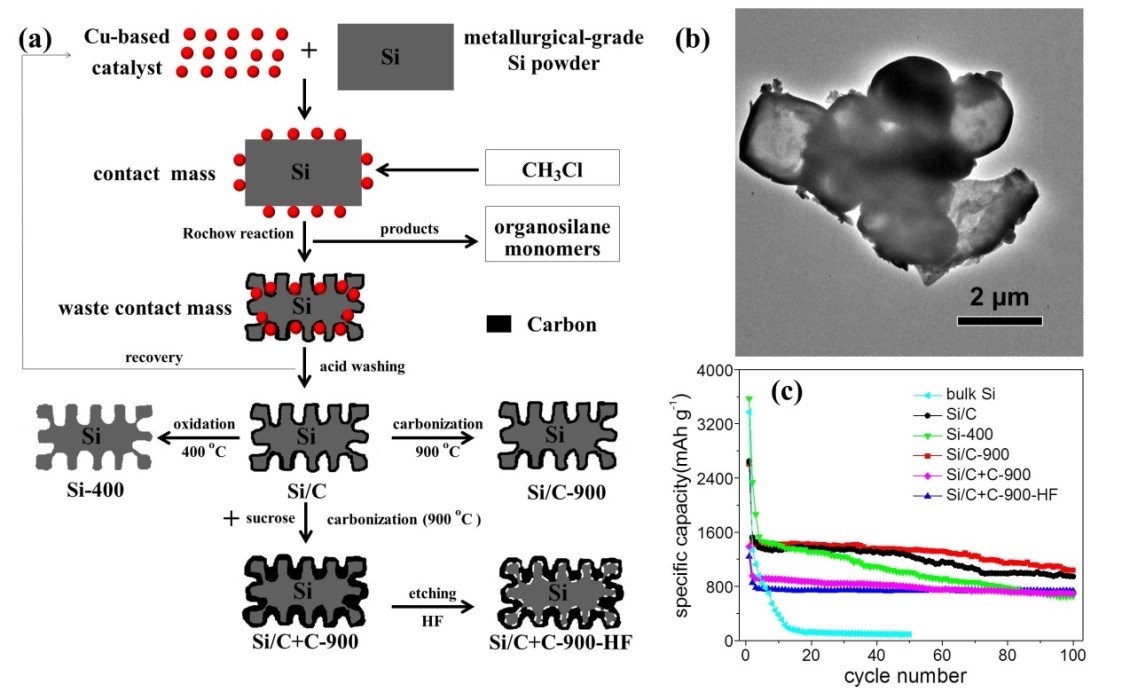Remarkable attention has been paid to novel Si/C composite anodes for next generation Li-ion batteries with high energy density and power performance, which can be employed in potable electronics, electric vehicles, and renewable energy storage. However, although Si has much higher theory capacity (4200 mAh/g) than presently commercial graphite anodes (372 mAh/g), the huge volume changes during lithium ion insertion/extraction and the low electronic conductivity lead to the cracks and poor cyclability of Si-based anodes. On the other hand, the reported methods to prepare Si-based anode materials have some critical drawbacks, such as the harsh reaction conditions (high temperature), high cost (noble metals), toxic reactants, tedious processes, and particularly the small scale synthesis, as well as low productivity, which limit their large-scale manufacture and applications. Recently, the research group of Catalysis and Porous Materials for Energy, led by Prof. SU Fabing at Institute of Process Engineering (IPE) of the Chinese Academy of Sciences, developed a novel scalable route to prepare porous Si/C anode materials. The key point is that the pores of Si were created via the Rochow reaction, which was discovered in 1940s, is still the most economical route to produce organosilane monomers in chemical industry. They rationally prepared porous Si/C materials by controlling the reaction conditions. After recovery of spent Cu-based catalyst followed by facile post treatment, the obtained Si/C anodes show good electrochemical performance, suggesting the promising application in Li-ion batteries. More importantly, the large scale preparation of nanostructured porous Si materials used in other areas, such as nanoelectronics, photonics, sensors, delivery systems, and solar cells, is also possible if the Cu-based catalyst particles are well patterned on the specific Si substrates. The results have been published on Angew. Chem. Int. Ed. 2014, 53, 5165-5169.  Figure a. The preparation process of porous Si/C materials; b. TEM image of porous Si/C materials; c. electrochemical property of porous Si/C anodes at the current density of 50 mA g-1 (Image by IPE)
|